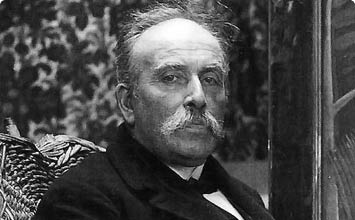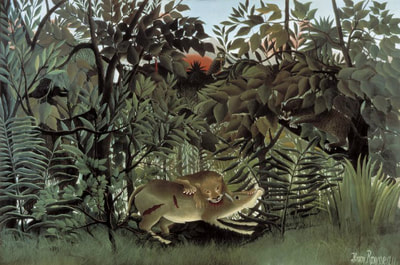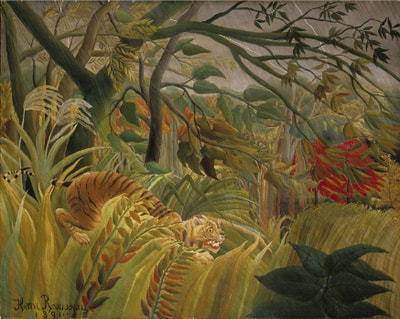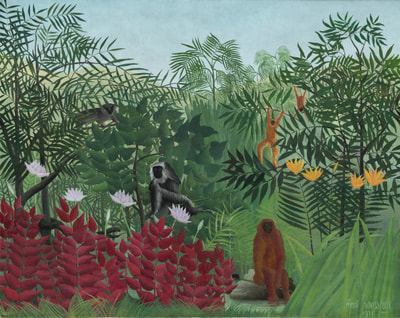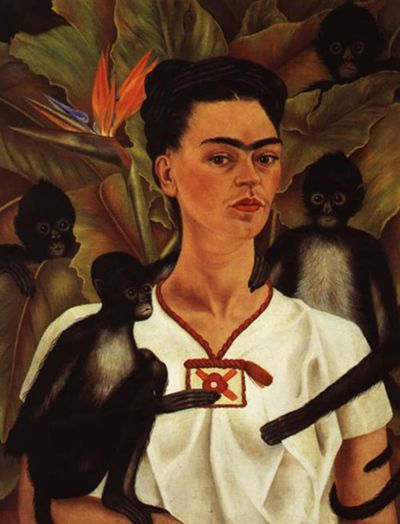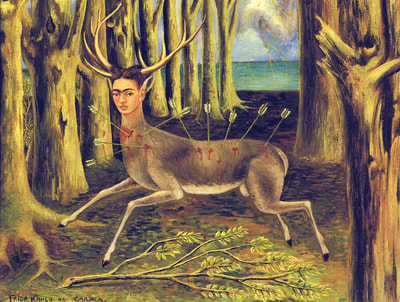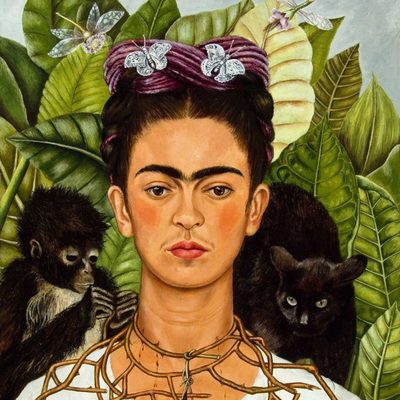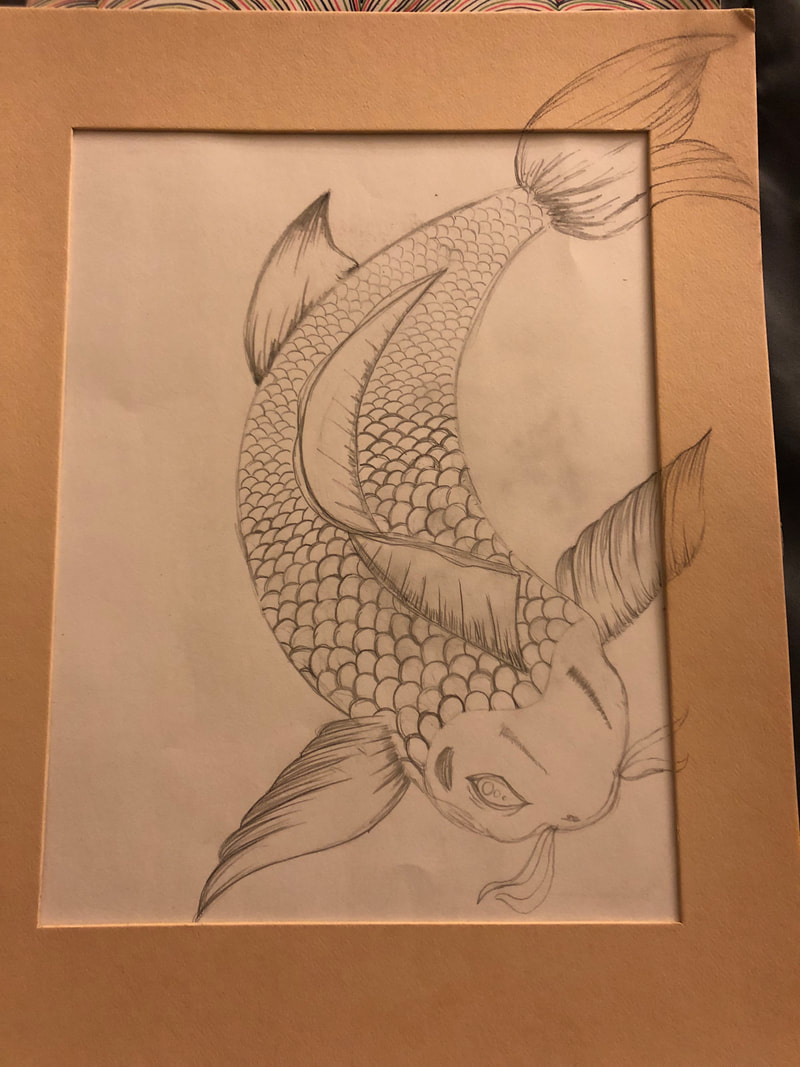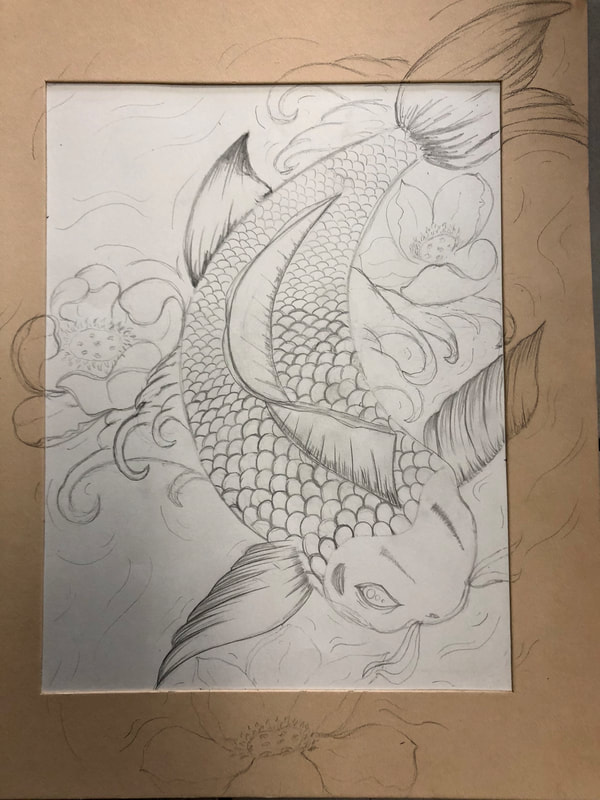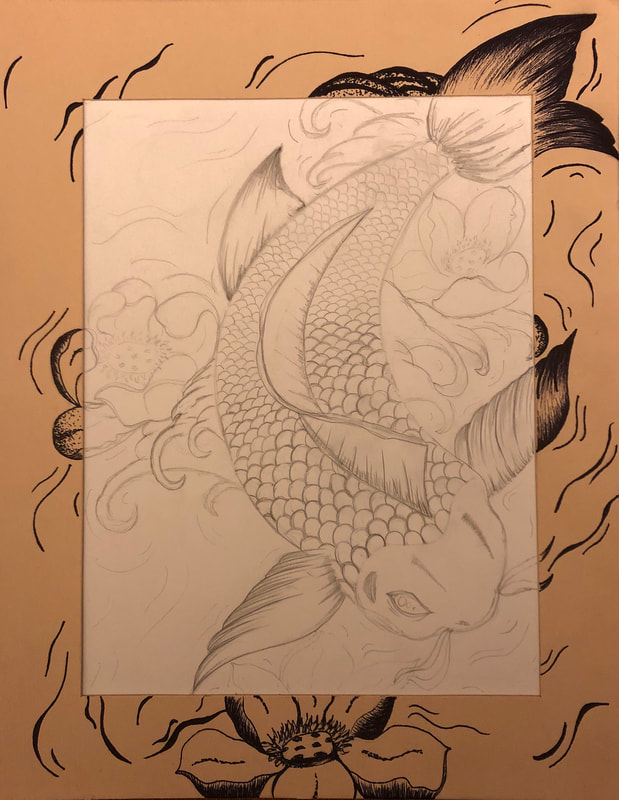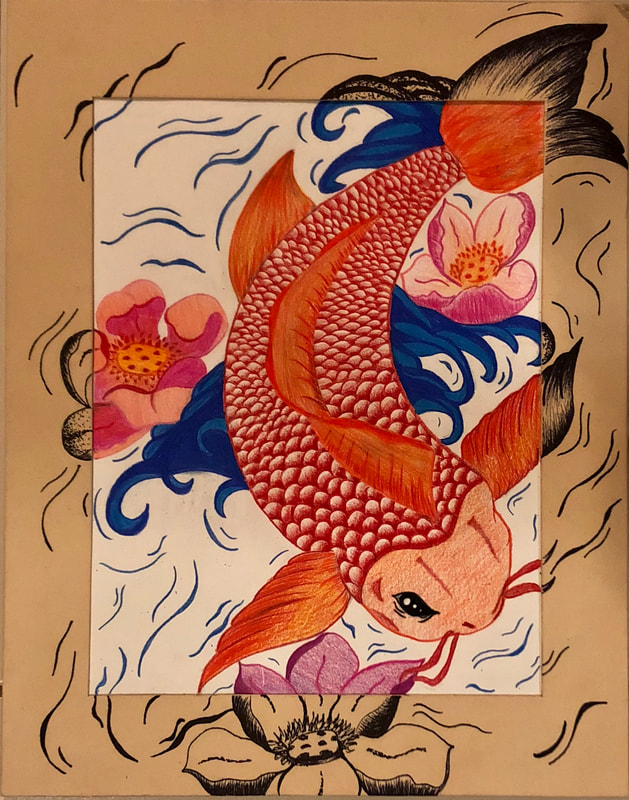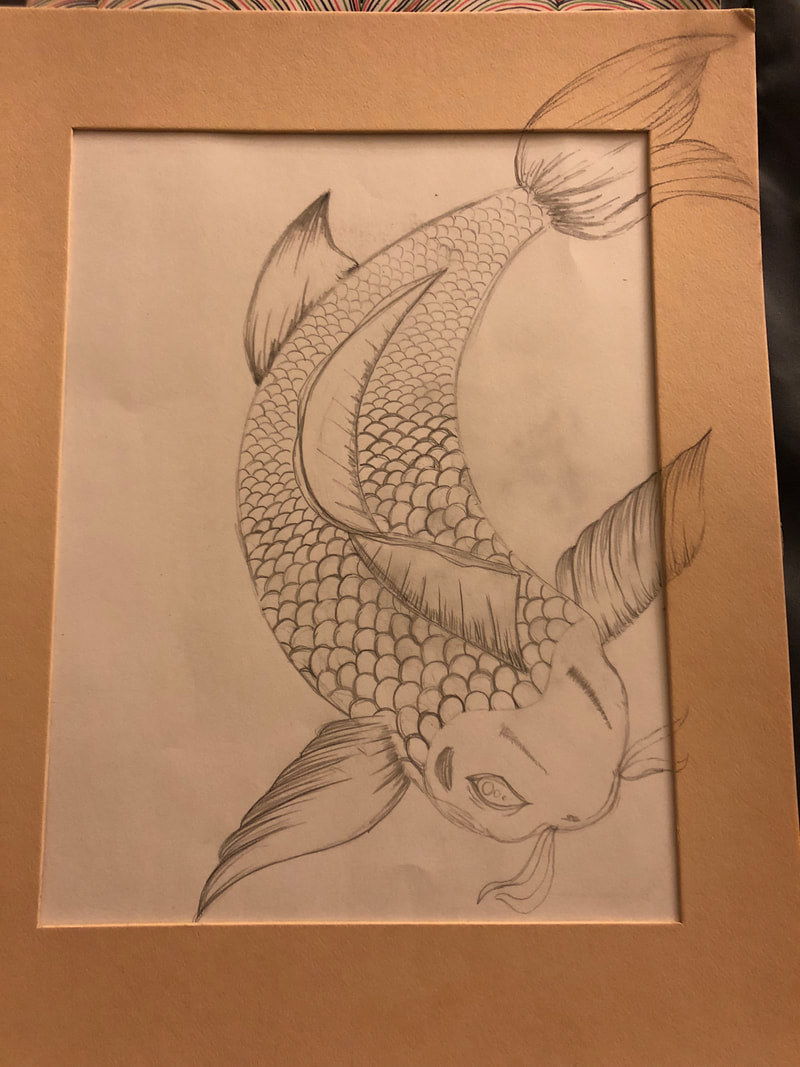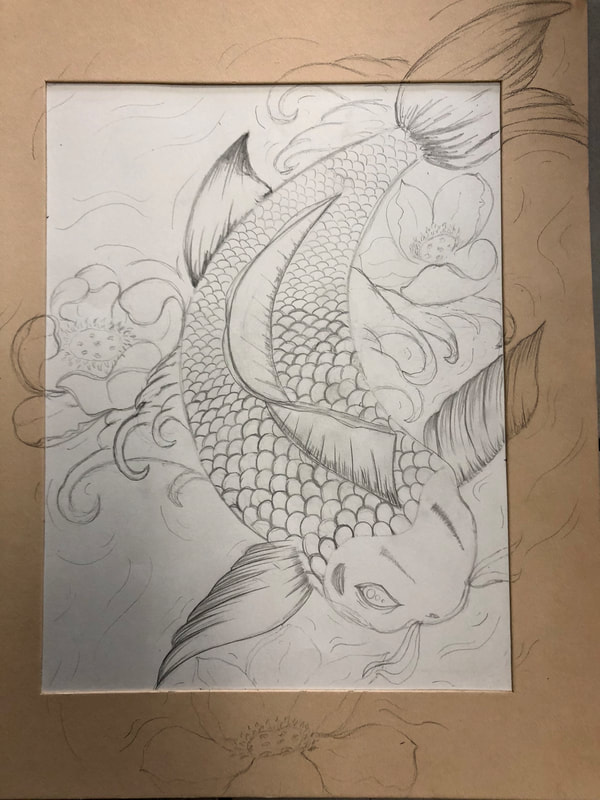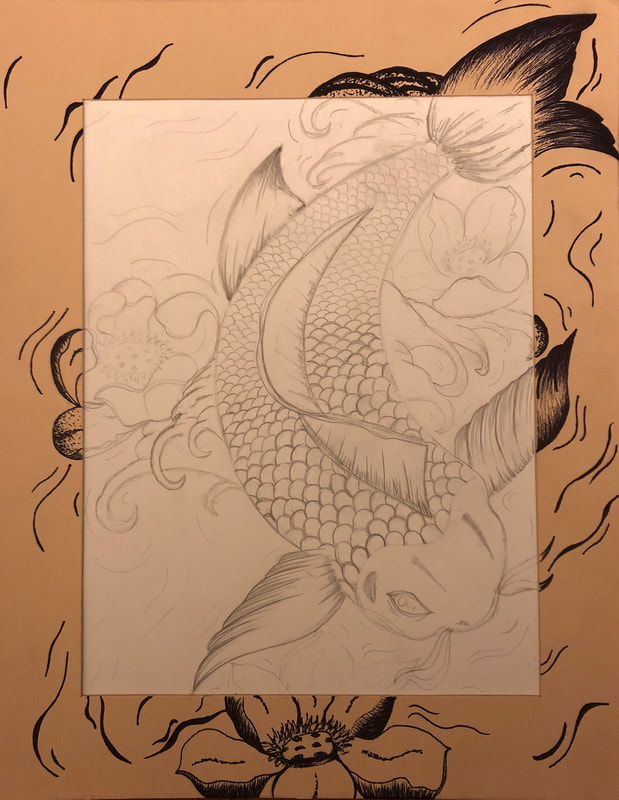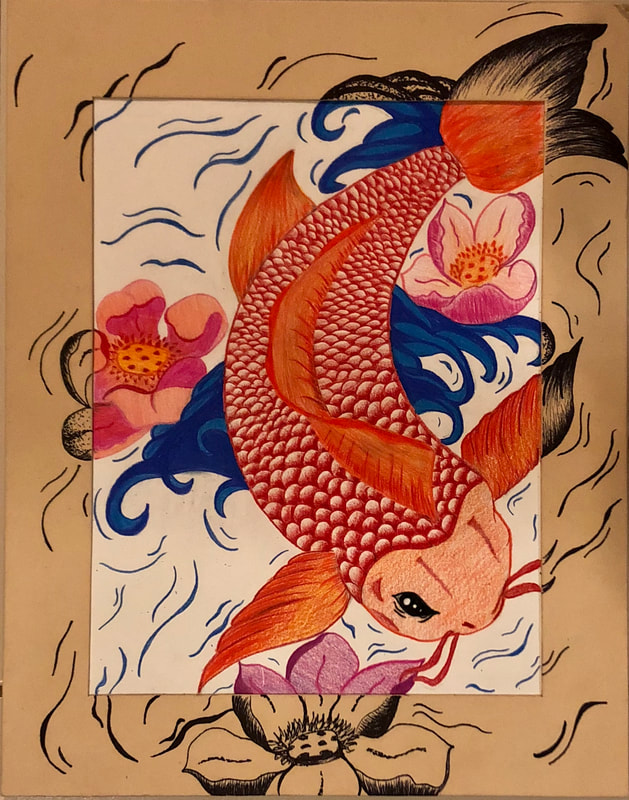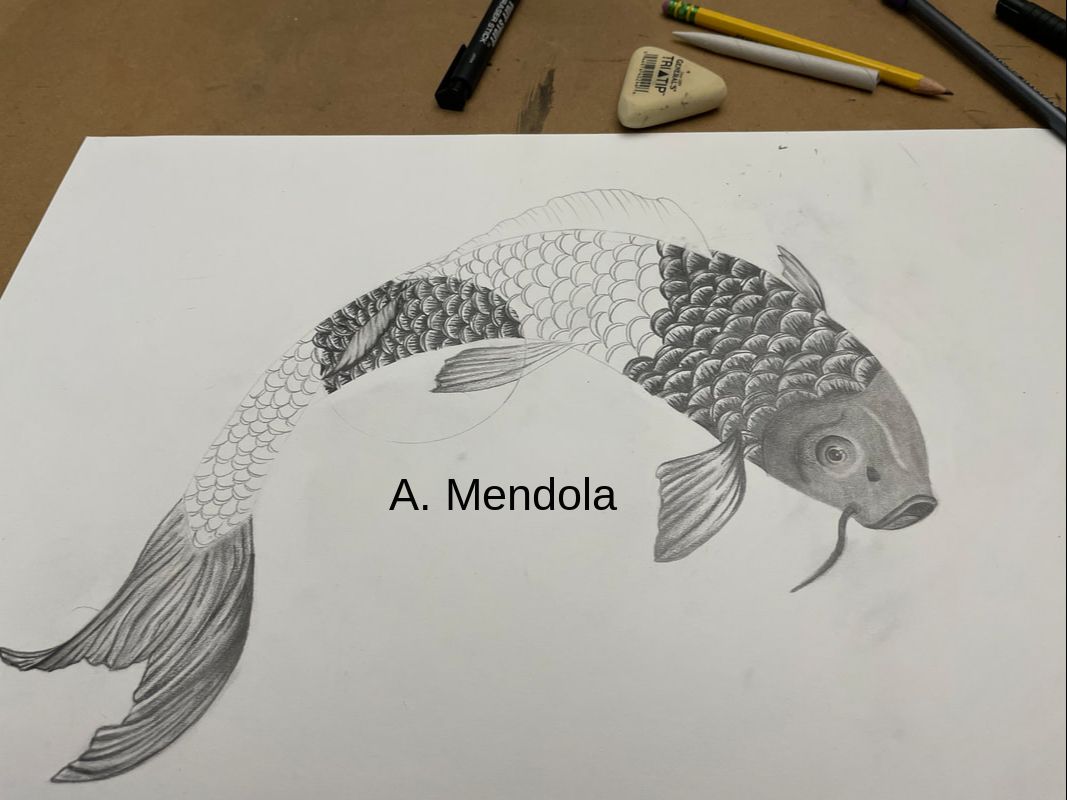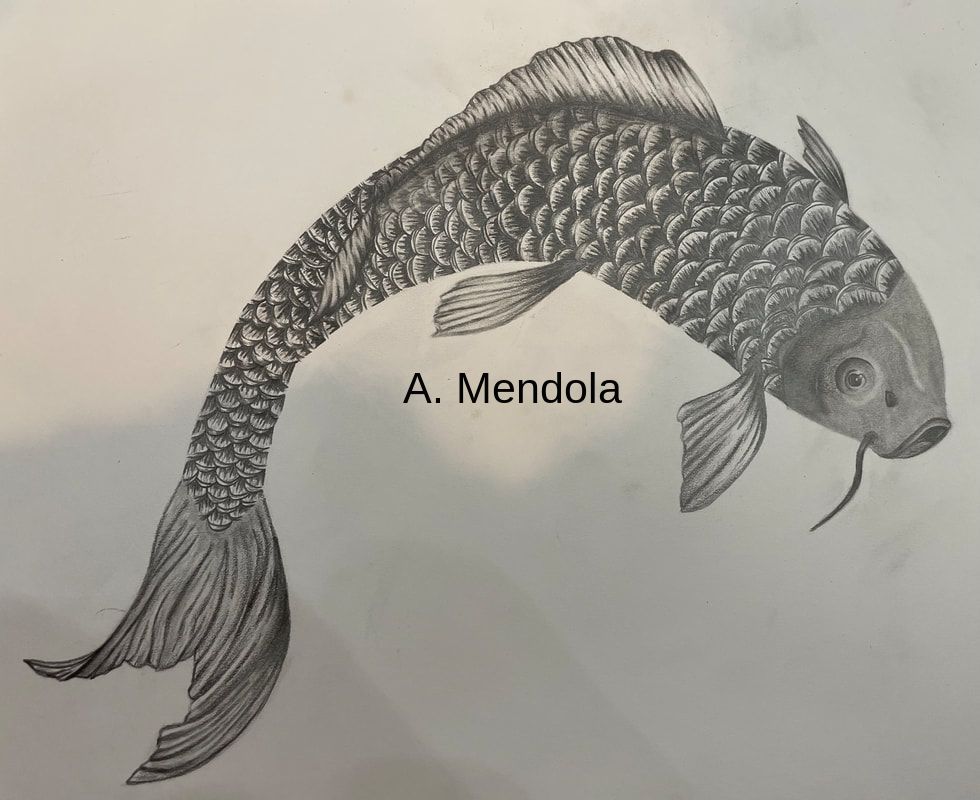Do Now:
English Spanish
|
| ||||||||||||
Henri Rousseau Frida Kahlo
|
Henri Rousseau was a French, Post-Impressionist painter from the late 1800's. His most famous work is of jungle themes. Although he had no true art training, Rousseau would study animals via illustrations and taxidermy animals and exotic plant life from botanical gardens. Since he had no formal art training and his style was criticized for being very childish looking, he was not well recognized for his work until after his death in 1910. Check out the site below to see his paintings and learn more about his life.
"Nature is my teacher" - Henri Rousseau |
Frida Kahlo was a Mexican painter from the 1900s most famous for her self portraits and use of symbolism. At the age of 6, Frida was diagnosed with polio and spina bifida, affecting her spinal and leg development. In 1925, when Frida was 18, she was involved in a bus accident, causing months of immobilization and years of pain. This is when Frida turned to painting, using herself and her pets to symbolize her experiences throughout life, Mexican culture, and the physical and psychological pain she suffered from daily. Check out the site below to see her paintings and learn more about her life.
"I never painted dreams, I painted my own reality" - Frida Kahlo |
Your Mission:
You will be creating an interesting composition in a similar style to Rousseau and Kahlo. Composition is the arrangement or placement of visual elements in a work of art. In your case, it would be the arrangement of your animal and its habitat. Now that you have studied an animal and made numerous styled sketches (see Sketchbook Assignment #3), you will determine how and where you want to position the animal and its habitat to make the most interesting composition for your viewer.
The best part? Your composition will be drawn partially on drawing paper and partially on mat-board frames, a thin, cardboard-like material.
You will decide on whether you want the drawings on the paper to be black and white and the mat-board frame images colored or vice versa.
The use of the two different drawing mediums with different 'coloring' techniques will help make for that interesting composition
by using contrast and emphasis!
Your Mission & Things You May Want to Consider in Spanish, please click here
The best part? Your composition will be drawn partially on drawing paper and partially on mat-board frames, a thin, cardboard-like material.
You will decide on whether you want the drawings on the paper to be black and white and the mat-board frame images colored or vice versa.
The use of the two different drawing mediums with different 'coloring' techniques will help make for that interesting composition
by using contrast and emphasis!
Your Mission & Things You May Want to Consider in Spanish, please click here
Things You May Want to Consider:
- Look at your animal sketches. Do you want the entire body of the animal showing or just part of it, like a close-up?
- Once you have an idea on how you want the animal to be on your art-board, think of its placement on your art-board. Is it going to start on the mat-board frame and work its way onto the paper or vice versa?
- Look at your habitat sketches. Do you want parts of the habitat like different sized jungle leaves or different coral and seaweed or do you want the entire habitat shown like the grass with trees and different plant life?
- Once you have an idea on what images you want to use for your habitat, where are they going to be placed? Are some of them going to be in front of your animal and overlap? Surrounding your animal? Behind your animal?
- Sketch your placement of the animal with its habitat exactly how you want your final artwork to look so you have it to refer back to.
Step-by-Step Picture References
Referencias de Imágenes Paso a Paso en Español
Rubric:
English Spanish
|
| ||||||||||||
Proudly powered by Weebly
